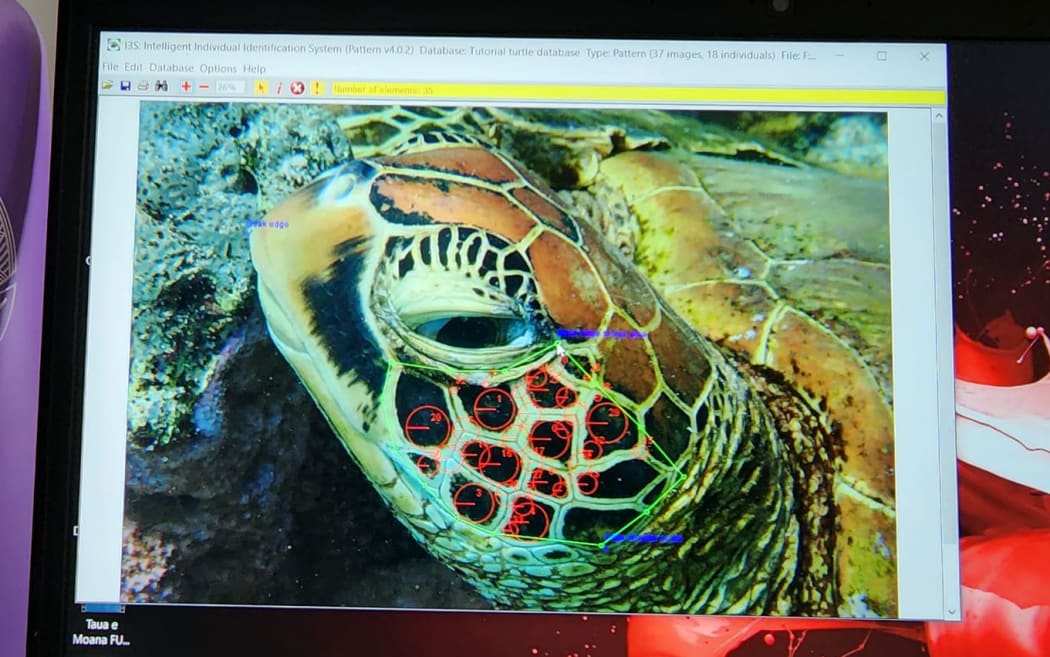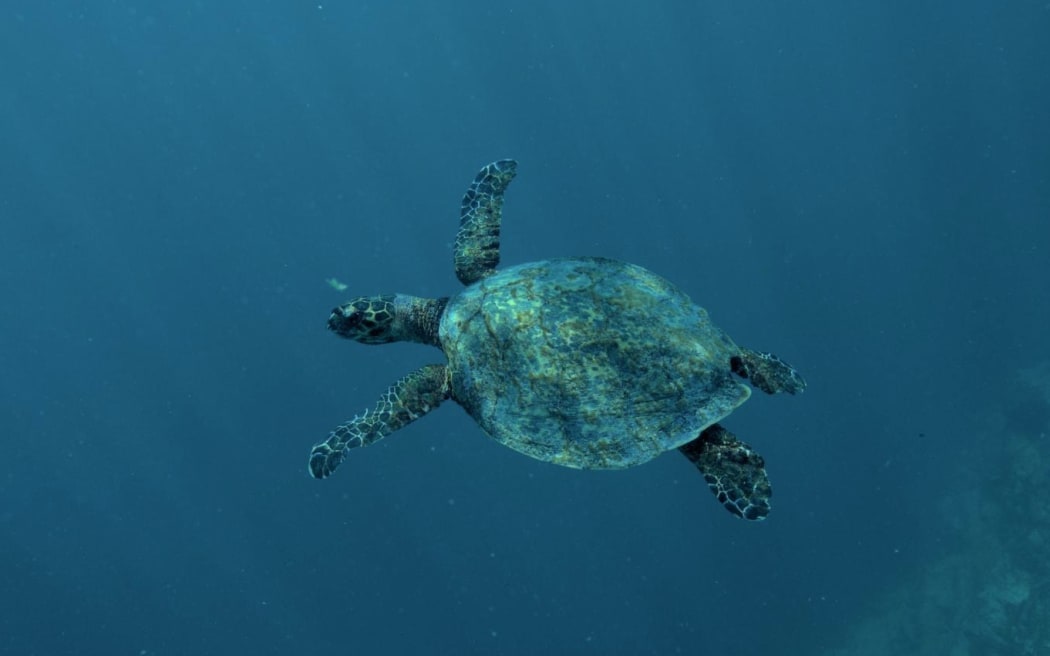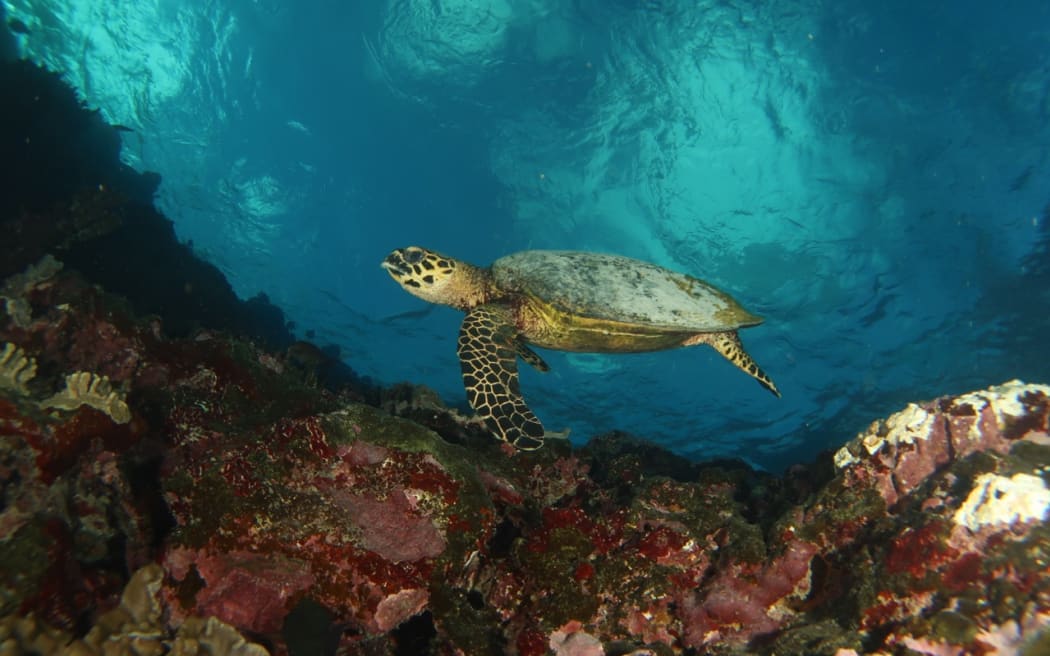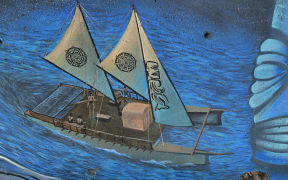
Turtles have unique facial patterns that can be used to identify them, like a human's fingerprints. Photo: Supplied / Te Ipukarea Society
Facial recognition software is being used to track turtle movements in the Cook Islands.
The citizen science turtle monitoring project has been up and running for a year now, launched in 2023 by Te Ipukarea society to involve the community in conservation efforts.
The public have been invited to submit photographs of turtles captured in Cook Islands waters, specifically with a clear view of the left side of their face.
Turtles have unique facial patterns that can be used to identify them, like a human's fingerprints.
"From those facial scutes, we can upload it into a software that recognises its particular pattern and then we are able to track that pattern through time if that turtle was to come up in photos again," Te Ipukarea Society director Alanna Smith said.

Computer software recognizes the unique facial scutes on the left side of a turtles face. Photo: Supplied / Te Ipukarea Society
"This is one way of getting more turtle conservation work done within our passages, but also a way of engaging the community and visitors to also be a part of the science," she said.
The environmental NGO has received images from as far back as 2011.
The collected data is available to scientific researchers across the Pacific as well as the South Pacific Regional Environment Program (SPREP) to complement their research on Pacific turtles.

The Hawksbill turtle and Green turtle are the most commonly spotted in Cook Islands waters. Photo: Supplied / Te Ipukarea Society
Smith said some interesting findings have already arisen.
"From the data we have received so far, we have seen that a lot of the turtles here on Rarotonga are residential. They just hang around in our passages for years upon years."
A Hawksbill turtle labelled CRHB-022 is one of the most photographed in Rarotonga, having appeared in images 13 times from 2016 through to 2023.
Smith said that the turtle has been observed travelling frequently between the north and and south sides of Rarotonga, stopping in various passages along the way.
The behaviour has also been identified in a couple of residential Green turtles, indicating a popular route for turtles to get the best of lounging and feeding on both sides of the island.

CRHB-022 : A critically endangered Hawksbill turtle has been recorded 13 times. Photo: Supplied / Adventure Cook Islands
The critically endangered Hawksbill and the endangered Green turtle are the two most commonly spotted species in Cook Islands waters.
This project will help Te Ipukarea Society to better understand the behaviours and habits of these protected creatures.

Alanna Smith takes a photo of a young rehabilitated turtle to add to the database. Photo: Supplied / Te Ipukarea Society



